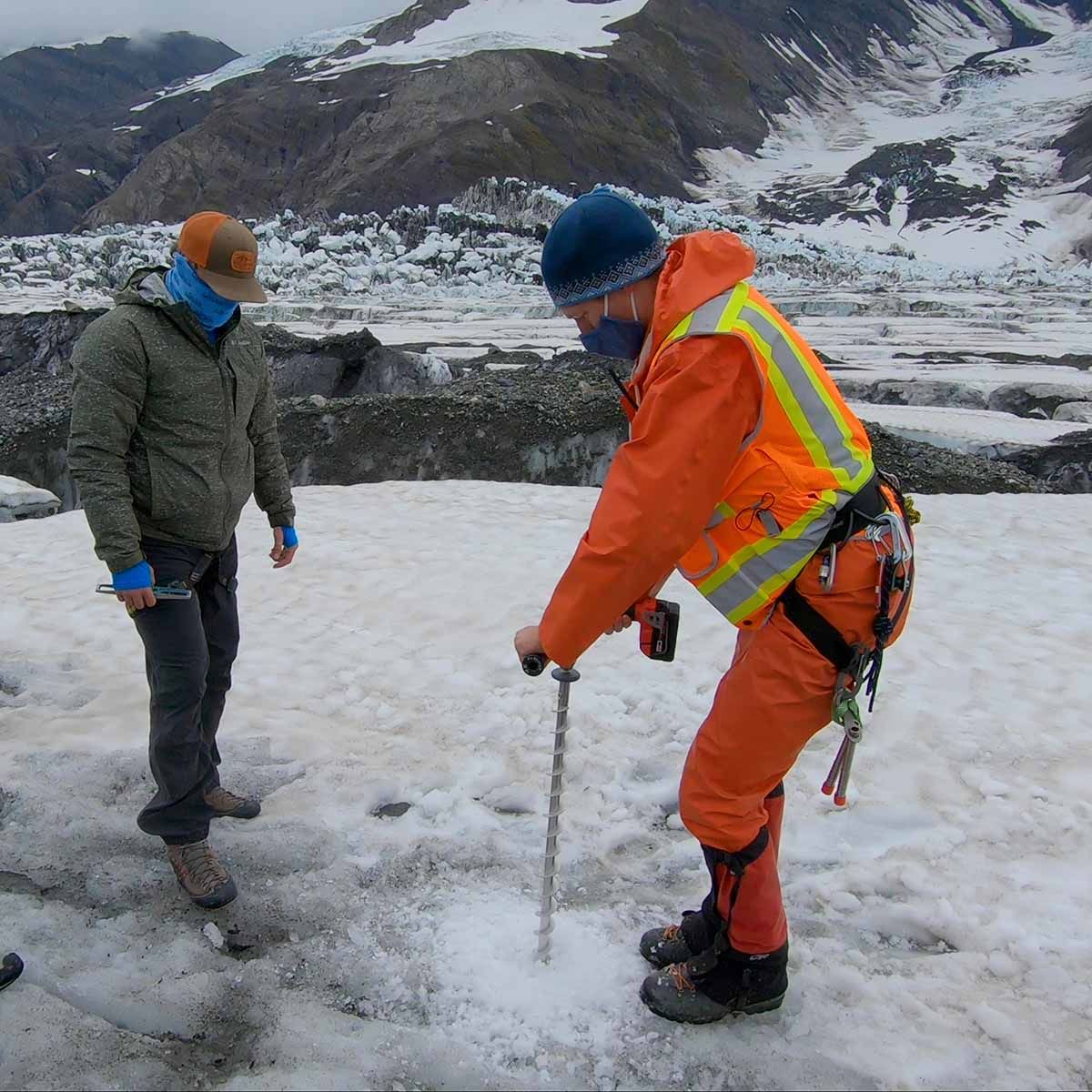University of Idaho glaciologists studying fast-moving glacier with hopes of improving sea-level rise predictions

A team of University of Idaho scientists is studying a fast-moving glacier in Alaska in hopes of developing better predictions on how quickly global sea levels will rise.
“What sets the speed limit for how fast the glacier will go?” asked Tim Bartholomaus a University of Idaho glaciologist. “That’s why we’re going to Turner. We’re trying to figure out the glacier speed limit.”
Bartholomaus, a professor in the Department of Geography and Geological Sciences, spent several weeks on Turner Glacier in Alaska’s southeastern tip near Disenchantment Bay. The glacier is unique because, unlike other glaciers, it surges every five to eight years.
A surging glacier is defined, broadly, as one that starts flowing at least 10 times faster than normal. But the how and why of that glacial movement is poorly understood, although recent research suggests that global climate change increases the likelihood of glacial surging.
During Turner’s surges, the mass of ice and rock will increase its speed from roughly 3 feet a day to 65 feet per day.
All of that is important because glaciers falling into the ocean are a major contributor to sea level rise, and current climate change models don’t reliably account for these movements.
For example, Greenland’s glaciers are one of the leading contributors to global sea-level rise, Bartholomaus said, raising sea levels by about 1 millimeter per year. Scientists have seen rapid increases in the movement of Greenland’s glaciers since 1996.
Since the early 2000s, Greenland switched from not having any effect on world sea levels, to increasing sea level by about 1 millimeter per year. Half of that yearly increase is due to warmer average temperatures, which leads to more ice melting. The other half, however, is because glaciers in Greenland are, as a whole, moving faster and calving into the ocean more frequently.
“Our overall guiding question is to better understand what makes ice speed up and what makes ice slow down,” Bartholomaus said. “That’s one of the big unknowns. We’re trying to forecast sea level rise.”
Glacial movement has something to do with water running underneath the glacier. Glaciers are full of holes – like “Swiss cheese” – and water runs through those cavities, which Bartholomaus compares to a city’s water main.
When the water pressure is high underneath a glacier, it starts to move, partly because it’s lifting the mass of ice and rock off the ground and partly because it’s lubricating the underside of the glacier.
But how exactly does that water move through the glacier and how does that movement impact the glacier’s speed? That’s the question he hopes to answer.
Bartholomaus applied for a National Science Foundation’s grant. Last year, while the NAS was reviewing the grant, Turner Glacier started its cyclical surge, which he thinks helped convince them to fund the three-year study.
Bartholomaus, some graduate students and researchers from Boise State University, headed onto the ice in August. Because the glacier moves so frequently – every three to seven years – it’s a crevassed mass that looks like it’s been chopped by a “master sous-chef,” Bartholomaus said.
They set up a base camp at the toe of the glacier and spent their days flying in on helicopters. They placed roughly 30 instruments – including seismographs, thermometers and other devices – buried deeply into the glacier and placed on rock outcroppings alongside the glacier.
This summer the team will return to get the instruments and replace batteries. Those instruments will remain on and around the glacier until the glacial surge stops, providing researchers with before and after data.
Surging glaciers have been documented for centuries. In the late 1980s, a surging glacier (combined with heavy precipitation) in Alaska raised the depth of Russell Lake by about a foot a day. Before that, Native people in Alaska tell stories of glaciers suddenly “charging down toward their villages,” forcing them to move in a hurry, Bartholomaus said.
The dynamic nature of glaciers, however, had been overlooked by most scientists until the early 2000s.
Then, with the advent of easily accessible satellite imagery and a growing understanding and concern about climate change, scientists realized that glaciers were moving all the time.
All of that matters, even for those of us that live far from the nearest glacier or ocean. Predictions about how much flooding will happen in coastal cities – New York, Miami, Seattle – are all coming from computer simulations predicting the future conditions of the world’s ice sheets. Getting those models right, or as close to right as possible, is paramount.
“We need to know how the ice sheets work so we can make predictions about how are they going to behave when we turn up the heat further,” Bartholomaus said.